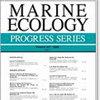在产卵集结地考察虹鳟的昼夜移动和空间利用,以评估季节性禁渔区的管理效力
IF 2.2
3区 环境科学与生态学
Q2 ECOLOGY
引用次数: 0
摘要
摘要:对于在短暂的鱼类产卵聚集地(FSAs)繁殖的物种,设计基于地点的管理需要了解聚集地周围的移动和空间利用情况。我们研究了美属维尔京群岛圣克罗伊岛的羊肉鲷季节性禁渔区(MSSCA)在产卵季节保护Lutjanus analis免受捕捞的效果。我们利用声学遥测技术确定了 24 条羊笛鲷在 3 个产卵季节的时空移动模式。羊舌鲷在 3 月至 7 月间聚集,4 月、5 月和 6 月达到高峰。与在日落时产卵的同类不同,L. analis 在下午早些时候产卵。我们可以确定,L. analis 在夜间将 MSSCA 用作集结区,但每天都会迁移到 MSSCA 以外产卵。我们还利用声学多普勒海流剖面仪的数据,研究了鱼类活动与沿岸海流模式之间的关系。鱼类在早晨随盛行海流向西洄游,在低潮时占据假定的产卵地点,然后再次随盛行海流向东洄游,回到 MSSCA。我们注意到,在产卵季节,长期偷猎现象非常普遍,降低了 MSSCA 和市场关闭的效果。根据我们的研究结果,为改善 L. analis FSA 的管理,我们建议重新评估 MSSCA 的边界和时间,改进执法工作,并通过共同管理工作让渔民和社区参与进来。鉴于这可能是圣克罗伊岛上唯一的 L. analis FSA 站点,积极主动的管理尤为重要。本文章由计算机程序翻译,如有差异,请以英文原文为准。
Diel movements and space use of Lutjanus analis at a spawning aggregation site, examined to evaluate the efficacy of a seasonal closed area for management
ABSTRACT: Designing place-based management for species that reproduce in transient fish spawning aggregations (FSAs) requires knowledge of movements and space use around aggregation sites. We examined the efficacy of the Mutton Snapper Seasonal Closed Area (MSSCA) in St. Croix, United States Virgin Islands, in protecting Lutjanus analis from fishing during the spawning season. We used acoustic telemetry to identify the spatial and temporal patterns of movement of 24 mutton snappers over 3 spawning seasons. L. analis aggregated from March to July with peak abundance during April, May, and June. Unlike its congeners, which spawn at sunset, L. analis spawns in the early afternoon. We were able to determine that L. analis used the MSSCA as a staging area during nighttime hours but migrated daily outside the MSSCA for spawning. We also used data from an acoustic Doppler current profiler to examine the relationship between fish movements and coastal current patterns. Fish migrated west in the morning with the prevailing current, occupied the presumed spawning site at slack tide, and then migrated east, again with the prevailing current, back to the MSSCA. We noted that chronic poaching was highly prevalent during the spawning season, reducing the effectiveness of the MSSCA and market closure. In light of our findings, to improve management of the L. analis FSA, we recommend re-evaluating the MSSCA boundaries and timing, improving enforcement, and engaging fishers and the community through co-management efforts. Pro-active management is of particular importance, given that this may be the only L. analis FSA site on St. Croix.
求助全文
通过发布文献求助,成功后即可免费获取论文全文。
去求助
来源期刊

Marine Ecology Progress Series
环境科学-海洋学
CiteScore
5.30
自引率
8.00%
发文量
238
审稿时长
3 months
期刊介绍:
The leading journal in its field, MEPS covers all aspects of marine ecology, fundamental and applied. Topics covered include microbiology, botany, zoology, ecosystem research, biological oceanography, ecological aspects of fisheries and aquaculture, pollution, environmental protection, conservation, and resource management.
 求助内容:
求助内容: 应助结果提醒方式:
应助结果提醒方式:


